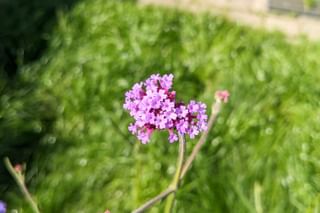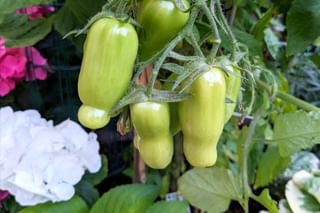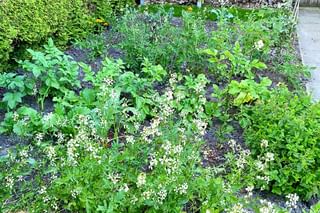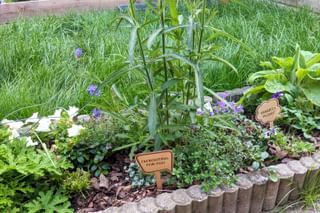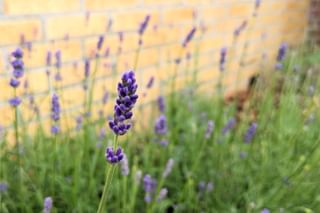This is why you need flowers in your fruit/vegetable garden
Discover how biodiversity can protect your plants from pests while enhancing the beauty and fragrance of your garden. Perfect for urban and rural gardeners alike!
If you're growing fruits and vegetables in your garden, you might have heard about crop diversity before: Planting different types of plants among each other and not planting a patch with just tomatoes or another fruit or vegetable.
But have you heard about planting flowers among your fruits and vegetables? In this plant care guide, we'll look at a few of the reasons why you might want to consider planting a few flowers in your garden.
Let's explore why flowers are such a good beneficial plant for your garden!
Flowers attract beneficial insects like bees
One thing flowers are very good at is attracting pollinators, like bees and butterflies, to your garden. The amazing smells and the bright colors are true pollinator magnets. Sure, most vegetables and fruits grow flowers themselves to attract those same pollinators, but why not help them a little as well?
Some pollinator-attracting annuals include zinnias, sunflowers, cosmos, lantana, tithonia (Mexican sunflower), and snapdragons. The most effective plants are those that have simple flowers, because double-petaled, frilly flowers make it harder for pollinators to reach the nectar and pollen.
For the best result, place these flowers in between your fruit and veggie plants in your garden. A very effective way to attract these pollinators is to place a few flowers along the edges of your garden as well. This is a technique many farmers also use: place/not remove wildflowers along the edge of their fields to attract beneficial insects.
Flowers deter pests
Flowers can help deter pests because their strong scents can confuse and repel harmful insects that might otherwise damage your fruit and veggie plants. Even better, certain flowers attract beneficial predatory insects that prey on garden pests. This shows you what a big impact a few carefully chosen and place flowers can have on your garden.
The best flowers for fighting pests are marigolds, sage, lavender, borage, catmint, and geraniums. Marigolds are probably the most well-known of these flowers, because of their quite effective against nematodes, which are parasitic worms. Some of these nematodes can be beneficial, as long as the population doesn't grow too large, according to this article by Michigan State University.
To get the most out of these beneficial flowers, you should try to plant them around the edges of your garden and near your vegetable plants. By placing them like this, you make sure there is always a beneficial flower near your growing plants.
Flowers can improve the soil health
When you're growing fruit-bearing plants, you'll probably know that this takes a lot of energy to do. If you're growing these types of plants in your garden, you'll probably have to fertilize them throughout the spring and summer to give them enough energy.
What if you could use flowers to help you with this? Sounds ideal right? Well, you're in luck, because flowers like clover and borage help improve soil health.
These flowers add organic matter to the soil as they decompose, and their root systems help prevent soil erosion and compaction over time. These flowers will help you to keep your garden healthy over time, make it look great, and help you to save a bit of time on maintenance. Sounds like a win-win to me!
Flowers increase the biodiversity of your garden
I've already mentioned crop diversity in the introduction, but that's not all the diversity you want in your garden. An increased biodiversity in your garden helps to create a more balanced and resilient ecosystem where beneficial insects thrive.
When these beneficial insects thrive, they'll help to keep the bad insects away, and they help to pollinate your fruit-bearing plants. Besides thriving insects, a garden with a high biodiversity can handle "disasters" much better than gardens with 1 or 2 crops.
Imagine you're growing several tomato plants in the same patch in your garden and one of the plant gets infected with something. If the only plants you're growing are tomato plants, it's very likely the other plants also get infected, and they all die.
By adding many types of plants and flowers in between the tomato plants, your garden has a much higher chance of only losing one plant rather than them all. The neighboring plants might attract insects that feast on the pests or perhaps the neighboring plants are "immune" to the pests, so it won't spread.
Flowers just look really good
Flowers are very useful in your fruit and veggie garden, but they also just look really good! Who doesn't love a garden with many bright colors, amazing smells, and a true sense of nature during the spring and summer?
I know this isn't a good reason why you "need" flowers in your garden, but to me, gardening is all about relaxing, making plants grow, watching my garden change during the year, and just have a good time.
If you've made it this far in this plant care guide, let me highlight one more point. Biodiversity, especially in urban and rural areas, has decreased as nature is replaced by bricks. To keep our neighborhoods diverse, healthy, and resilient, consider planting native plants and flowers in your garden to attract beneficial insects. In return, you'll get a colorful and fragrant garden, perfect for hot summer days.
Thank you for reading this post! I hope it helps you to keep your plants healthy and beautiful! If you're looking for more guides on specific plants, you can always request a plant guide to get a guide for the plant you have trouble with.
Test your plant care knowledge
Quiz completed!
Want to learn more? Sign up for my newsletter to receive free tips in your inbox!
Sign up now!